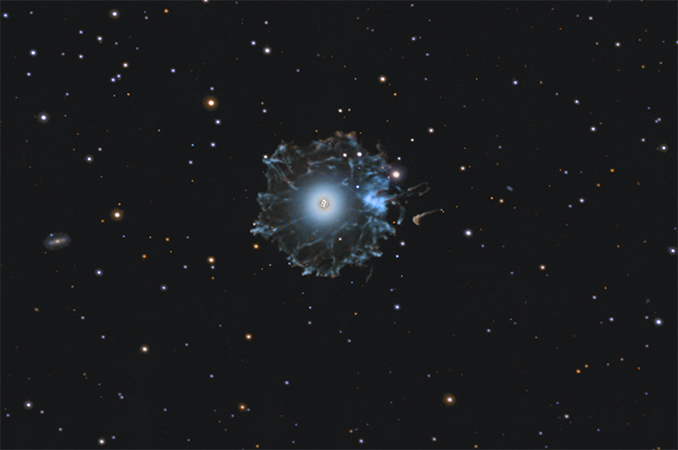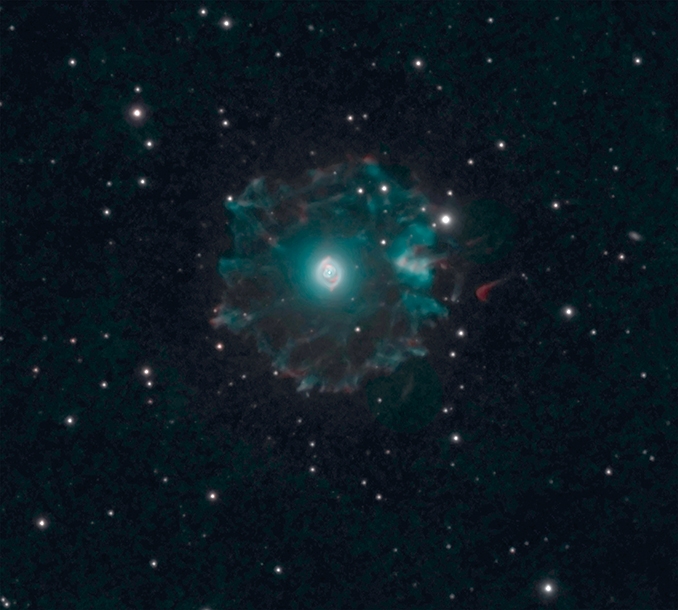The current popularity of the Cat’s Eye Nebula owes much to the spectacular portraits of the Hubble Space Telescope, although it was famous well over a century before Hubble was even conceived. In 1864 Sir William Huggins (1824-1910) took a spectrum of the object which shortly afterwards was cataloged as NGC 6543. It was the first spectrum of a planetary nebula and Huggins was able to distinguish nebulae galaxies by their emission lines, characteristic of incandescent gas.
Cat’s Eye is a wonderful planetary nebula in Draco that is well exposed at this time of year, can be found and observed through small and medium aperture telescopes, and is worthy of its illustrious history.

How to observe:
The Cat’s Eye Nebula (NGC 6543 and Caldwell 6) is located in the far northern sky among the stars of Draco, the Dragon. This part of the sky is circumpolar at mid-northern latitudes, and the planet peaks above our heads on summer nights. Cat’s Eye shouldn’t be too difficult to locate because, shining at magnitude +8.1, it’s one of the brightest planets and has the added benefit of high surface brightness.
Search around 13 degrees north of the “Head of Draco” asterism (magnitude +2.2 gamma [γ] draconis [Eltanin] is the brightest of its four stars) for magnitude +3.1 Altais (delta [δ] Draconis) and magnitude +3.2 zeta (ζ) Draconis. These stars are about 12 degrees apart, and the Cat’s Eye Nebula lies just south of the midpoint between them.
Observing at low magnification through an 80 to 100 mm (three to four inch) telescope, the nebula will look decidedly like a fuzzy ninth-magnitude blue-green star, due to its tiny 23″ × 17″ shape. However, increasing the power as conditions permit and adding an O-III filter to the light gear will bring the Cats Eye to life.
For imagers and owners of large telescopes, there’s an interesting challenge in IC 4677, a nebula located very close to Cat’s Eye that until recently was thought to be a galaxy. In fact, it’s the brightest part of a halo of matter that envelops the Cat’s Eye.


 Universo Viviente
Universo Viviente



